You Need to Hold This! Fujifilm GFX 100S First Impressions
Holding the Fujifilm GFX 100S gave me a lot of hope for the future of cameras.
Cameras these days are boring. Well, most of them are at least. Everyone is making a good camera. But few are exceptional. In the little time I’ve used it, the Fujifilm GFX 100S seems exceptional. In fact, it’s the first camera I’ve held in a long time to get me excited. Think of it as the big brother to the Fujifilm XH1. If you took that camera, made it medium format, a bit bigger, and changed a few things, this would be it. Fujifilm took their prized winning 100MP GF format sensor and stuffed it into here. Plus, they’re giving us the new Nostalgic Negative film simulation. What’s most impressive, though, is the autofocus. All of this for under the cost of the Sony a1. But of course, those are different cameras. But the Fujifilm GFX100s is showing me that medium format is truly their future.
Editor’s Note: This is not our review. It is our first impressions with the camera on having it for a few hours. Our full review is in the works. But we did this post using a pre-production version of the camera. We need to explicitly say this to clear up any confusion.
Tech Specs

- 102 megapixels 43.8×32.9mm CMOS Sensor
- X processor 4 (4:2:0 10bit / 12bit ProRes Raw 4K/30p)
- 5.0fps Continuous Shooting with AF-C / 64Gb DRAM
- New Smaller Shutter & IBIS in smaller & Lighter weight body
- Up to 6.0 stops Sync. Lens/IBIS / 4K30p non-crop recording
- 100% Phase Detection AF up to -5.5EV @ F1.7/ F13~16
- All of the features from X-T4 and GFX100
- DIS for Movie / ProRes Raw 12bit Output
- 400 Megapixel Multiple Shot, Drone & Gimbal support
- GFX S (shooting) style Body H150 x V104 x D44mm
- New Battery NP-W235 in grip makes the body thinner
- Weather and Dust resistant, Freeze Proof to -10°C
- Initial Shipment: Feb/Mar 2021
- Launch Price: US $5,999
Ergonomics

This is the Fujifilm GFX 100s in all its beautiful glory. It looks a lot like the XH1 but super up. Of course, when you get closer, you realize that’s not the case. Let’s dive into the ergonomics of this camera together!
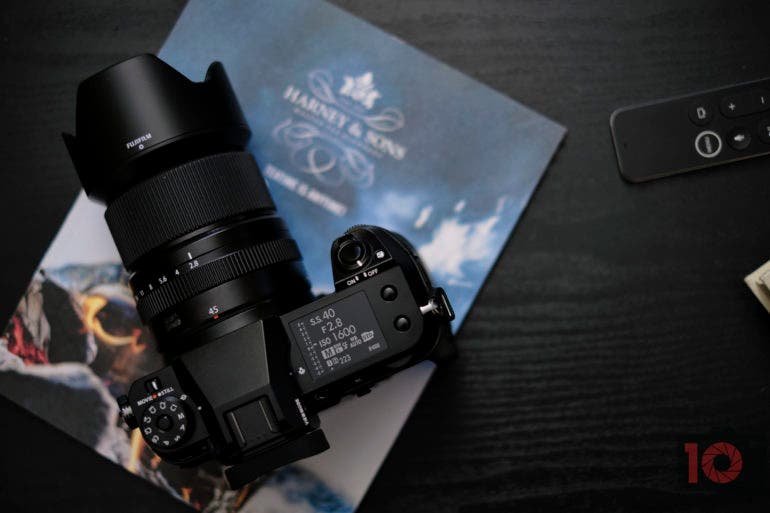
First up on our journey is the top of the camera. There is a giant LCD screen on the right side. Along here are two programmable buttons, the exposure controls, the on/off switch, the shutter button, and an illumination button. On the other side is a mode dial. The latter will be welcome to many a photographer.
In the middle of all this is the viewfinder. It doesn’t flip up, and it’s not removable. I’m thrilled with that.
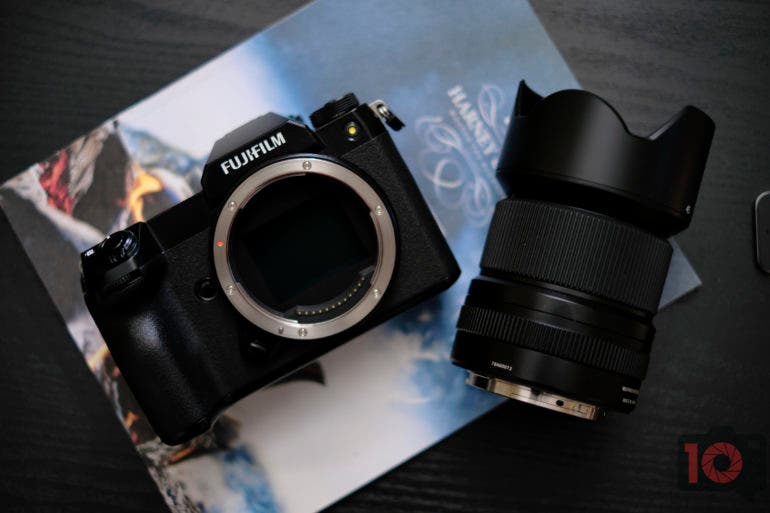
Here’s the front of the camera. The grip is nice and pronounced. There is also a custom function button and the lens release here. Of course, most of this area is dominated by the giant mount.
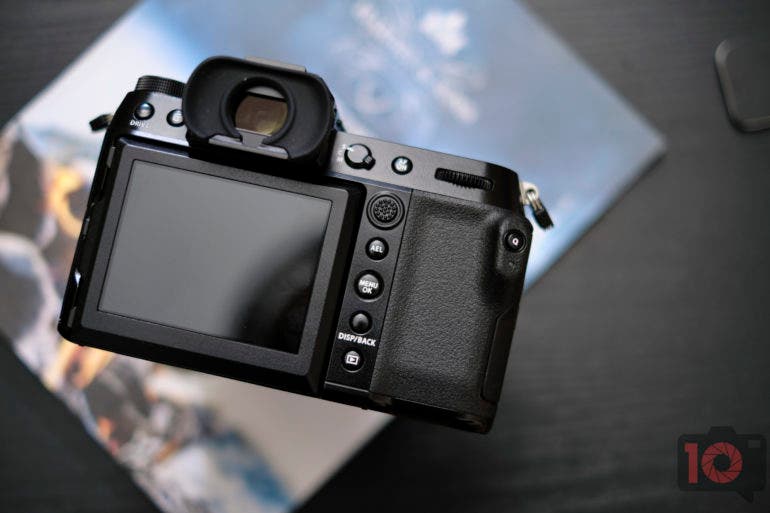
Turn to the back of the camera, and you’ll find buttons and dials. In my mind, they’re all placed in spots where I’ll need to get used to. But with time, they’ll be just fine. Fujifilm kept the back very clean. And I’m delighted with that.
What I’m not liking is the lack of touch functionality. I really wanted this to be a full touchscreen. But I couldn’t even find that option in the settings. Maybe it’s because it’s a pre-production unit pictured here. But if Fujifilm fully removed the touchscreen interface, I’m very sad.
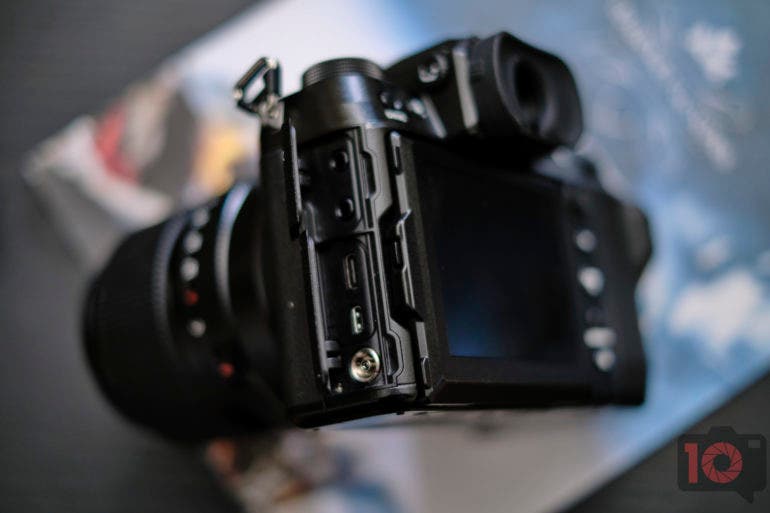
As far as ports go, Fujifilm isn’t playing around this time. Both the headphone jack and the microphone jack are useful slots. Then there’s a PC Sync port. Plus, there’s HDMI and USB-C. Best of all, it charges via USB-C. That’s a major upgrade!!!

Lastly, the LCD screen tilts and pivots just like the XH1. I’m again pleased about this.
Build Quality
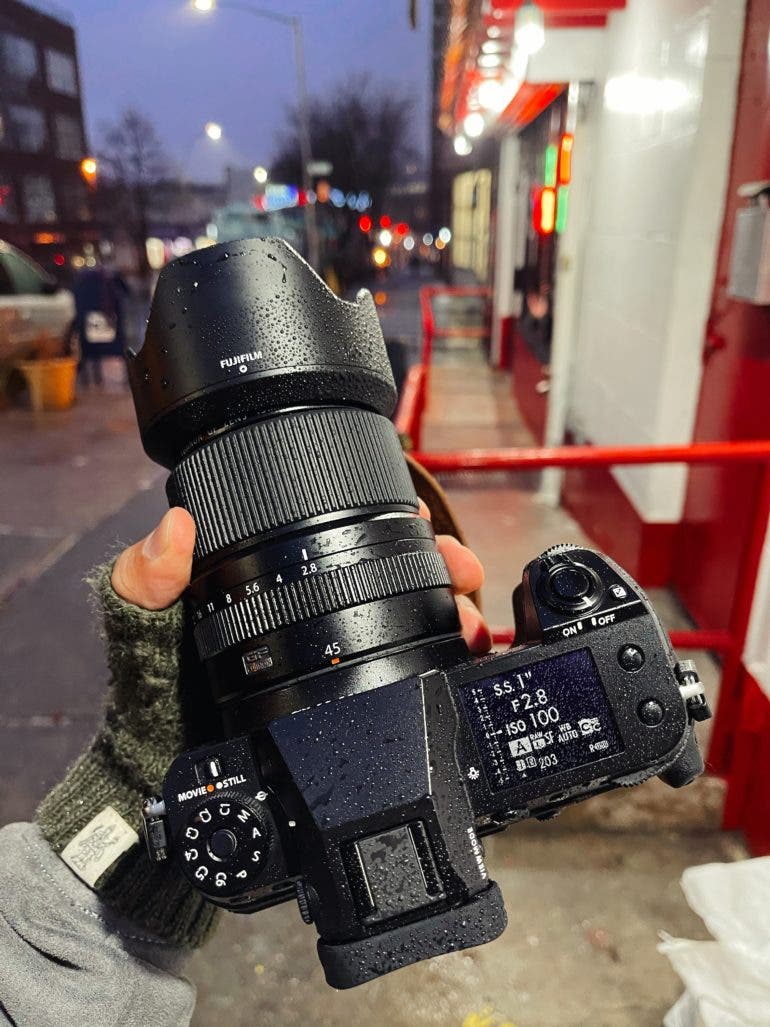
The Fujifilm GFX 100s is touted to have weather and dust resistance. And, of course, it should. This is one of Fujifilm’s best and highest-end cameras. There are tons of weather sealing points. But the big advantage this has over the GFX 100 is the viewfinder. With the GFX 100s, it’s a fixed viewfinder. It isn’t removable. That’s a big one!
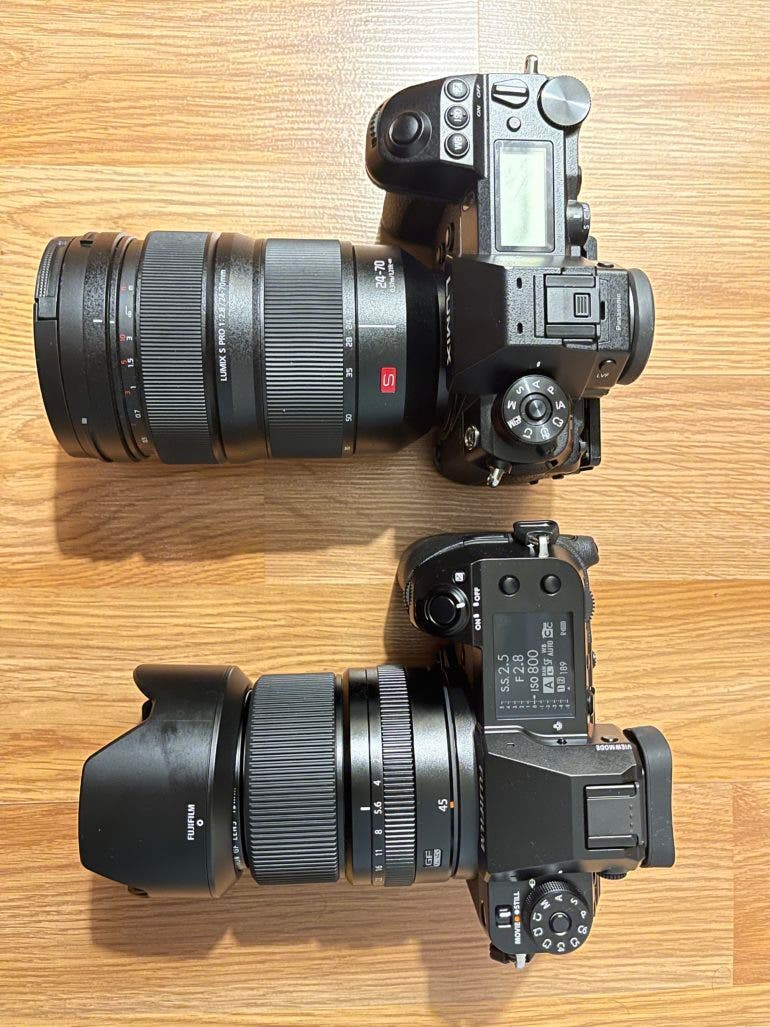
In the hand, I’m super impressed. Luckily, I’ve still got a Panasonic S1 in the office right now. And it’s about the same size. In some ways, it feels a tad smaller and lighter. It also feels a heck of a lot simpler to use. The difference here is that Fujifilm made a medium format camera about as large as the biggest full-frame camera out there. And that’s saying something.
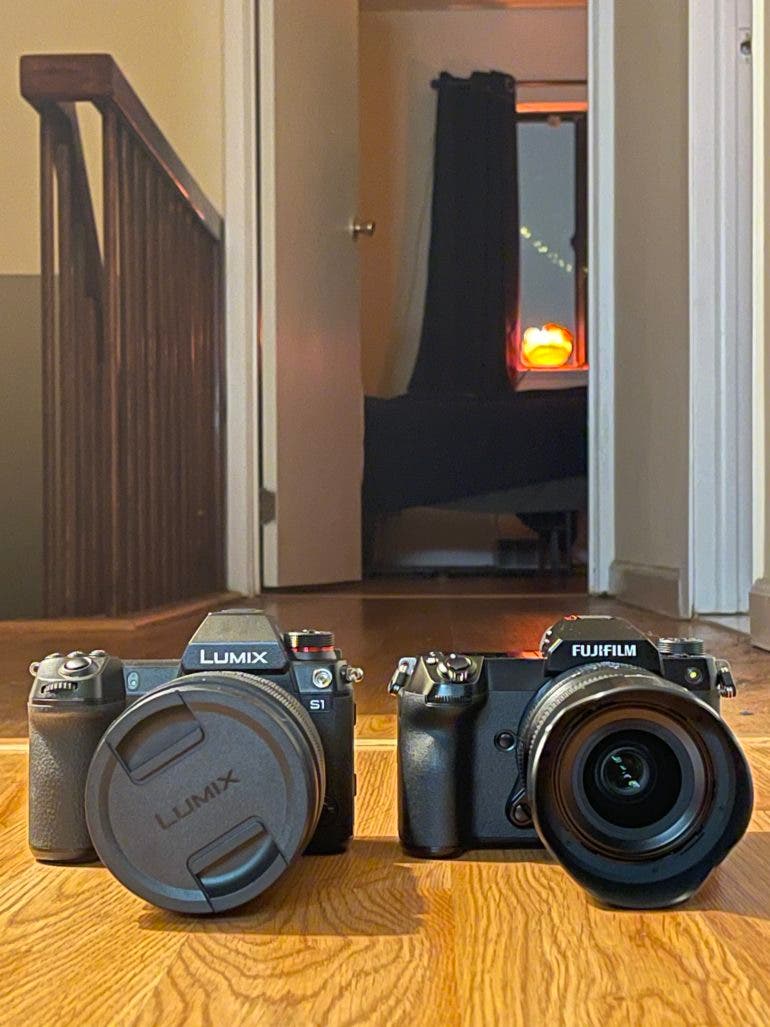
Of course, the Fujifilm GFX 100s is larger than any Sony, Canon, or Nikon mirrorless full-frame camera. But again, you’re getting a 100MP sensor with image stabilization in there. If anything, it furthers our beliefs that Panasonic really messed up with the S1, S1H, and S1R. The days of the 5D Mk II and full-frame cameras of that size are over. But for medium format, it’s a new future. Fujifilm’s cameras have always been incredibly well built. In fact, Brandon Remler proved this with the Fujifilm XS10–much to Brett and I’s dismay. We’d never do a test like this because it’s irresponsible for us to do that as a publication. With all this said, The build quality of the Fujifilm GFX 100s is solid.
However, there’s something to be said about the materials used. The Leica SL2s and Leica SL2 feel significantly more solid. And that’s because they are. Leica has the courage to attach an IP rating to their cameras. Where the Leica feels like a cold beast, the Fuji feels like it has a beating heart.
Ease of Use

I mostly used the Fujifilm GFX 100s in aperture priority. And I’m writing this with having maybe spent 8 hours with the camera in the same room. It’s easy enough to use. But I wish that the camera had another control dial. As it is, you can set the front camera dial to ISO control. Then the back will control the shutter speed, and the lens will control the aperture. But if the lens is set to the “A” mode, then you’ll need to set a button to ISO control. It’s not the end of the world. But I see how winning over Sony users might be a struggle.
I took the camera out into the rain earlier tonight. For the record, it’s snowing, wet, and cold out here in NYC. It’s still tough to handhold at 1 second long exposures. But it’s not impossible with good handholding tactics. This is a pre-production unit. So I’m excited to see what’s possible with the full unit.
Autofocus
This is where I’m most impressed. The autofocus on the Fujifilm GFX 100s is faster than any L mount camera I’ve used. It even makes the new Nikon cameras look a bit sluggish. In fact, at times, it felt even almost on par with the X series. When I saw that happen at first, I was a bit confused. I thought it wasn’t possible. But this is the first GFX camera I’ve been thoroughly impressed with as far as the autofocus goes.
Most impressive about the Fujifilm GFX 100S, though, is the low light performance. This camera is incredibly fast. It’s not beating Canon, Sony, or the Fujifilm X series, though. But it almost makes the L mount and Nikon look like they should just retire already. I haven’t tested it with continuous autofocus yet, and I doubt I’ll have time. But this is incredibly impressive.
Image Quality

Here are some JPEG samples. We’re very impressed with the camera so far. The photo above was shot at ISO 128,000. At 100 Megapixels, you’re getting a solid option. RAW files aren’t available to be tested in Capture One 21 yet. But we’ll report on this once they’re supported.

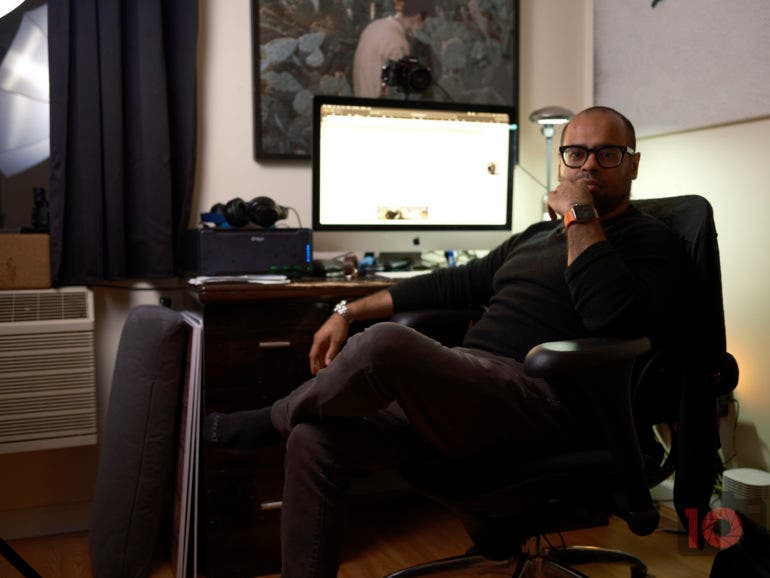
The two photos above are shot with the Nostalgic Negative film simulation. It’s pleasing for sure. I just wish that Fujifilm would make a self-timer mode that autofocuses right before it takes the shot. Instead, it focuses on an area and then takes a while to shoot. This isn’t a problem with just Fuji, though.
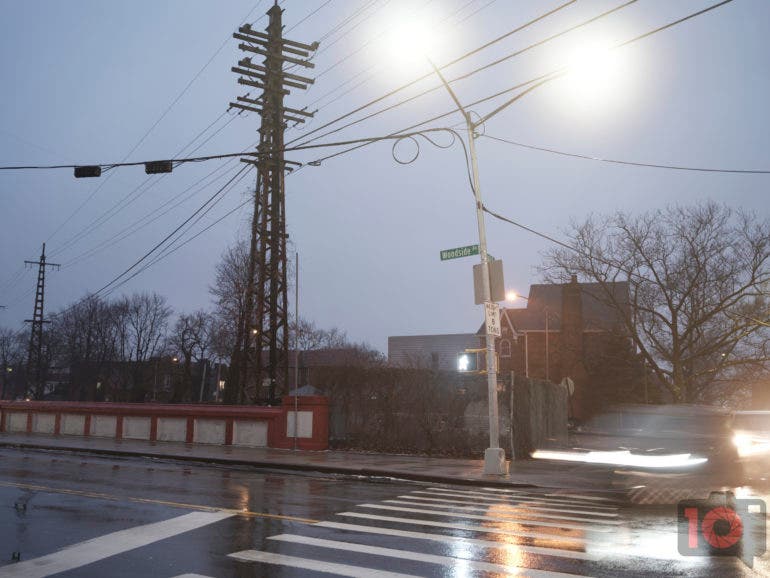


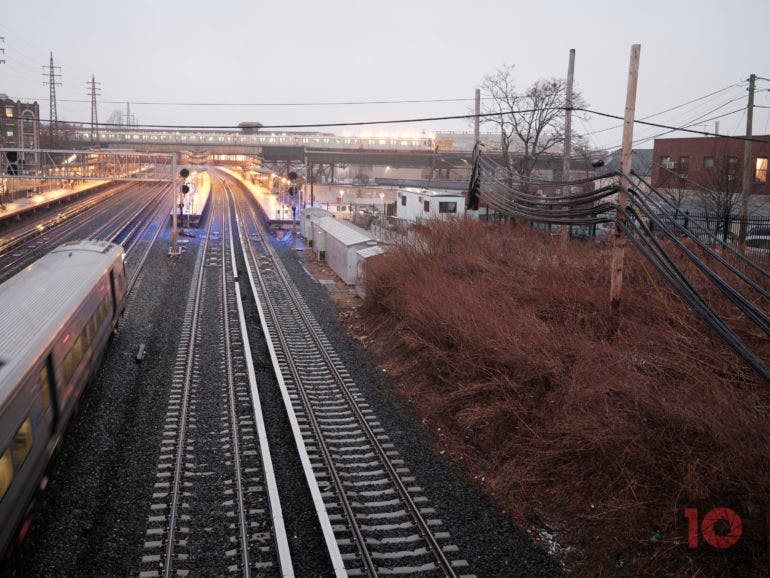



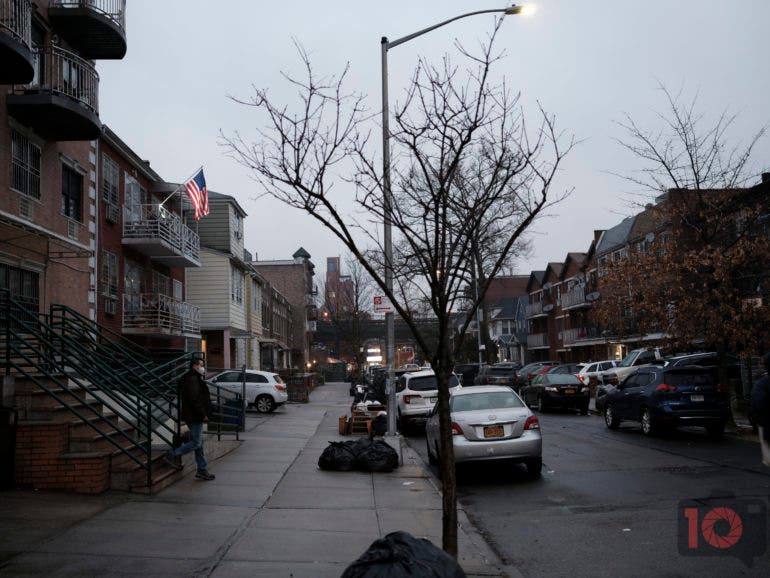

First Impressions
We’re so far very impressed with the Fujifilm GX 100s. This is indeed where we think the future of medium format will be. It’s also still Fujifilm’s best weapon against both Canon and Sony. I’m interested to see where this goes, and I’m hoping that Fujifilm continues to be an innovative company. More importantly, we’re really interested to see what kind of support this gets. Firmware updates are going to be very important here.